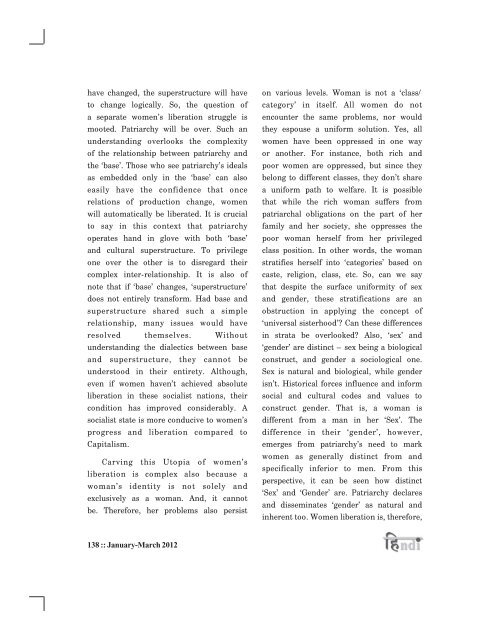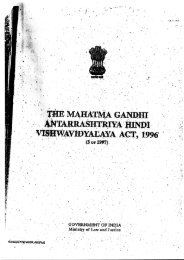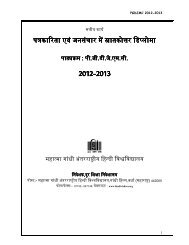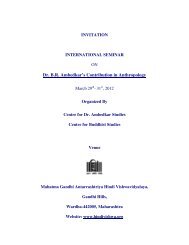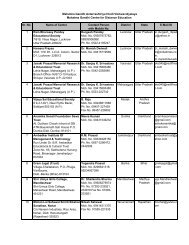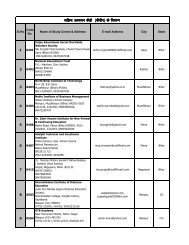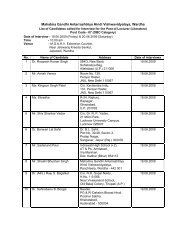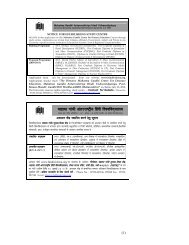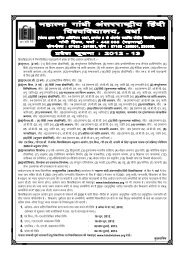A Journal of Mahatma Gandhi Antarrashtriya Hindi Vishwavidyalaya
A Journal of Mahatma Gandhi Antarrashtriya Hindi Vishwavidyalaya
A Journal of Mahatma Gandhi Antarrashtriya Hindi Vishwavidyalaya
You also want an ePaper? Increase the reach of your titles
YUMPU automatically turns print PDFs into web optimized ePapers that Google loves.
have changed, the superstructure will have<br />
to change logically. So, the question <strong>of</strong><br />
a separate women’s liberation struggle is<br />
mooted. Patriarchy will be over. Such an<br />
understanding overlooks the complexity<br />
<strong>of</strong> the relationship between patriarchy and<br />
the ‘base’. Those who see patriarchy’s ideals<br />
as embedded only in the ‘base’ can also<br />
easily have the confidence that once<br />
relations <strong>of</strong> production change, women<br />
will automatically be liberated. It is crucial<br />
to say in this context that patriarchy<br />
operates hand in glove with both ‘base’<br />
and cultural superstructure. To privilege<br />
one over the other is to disregard their<br />
complex inter-relationship. It is also <strong>of</strong><br />
note that if ‘base’ changes, ‘superstructure’<br />
does not entirely transform. Had base and<br />
superstructure shared such a simple<br />
relationship, many issues would have<br />
resolved themselves. Without<br />
understanding the dialectics between base<br />
and superstructure, they cannot be<br />
understood in their entirety. Although,<br />
even if women haven’t achieved absolute<br />
liberation in these socialist nations, their<br />
condition has improved considerably. A<br />
socialist state is more conducive to women’s<br />
progress and liberation compared to<br />
Capitalism.<br />
Carving this Utopia <strong>of</strong> women’s<br />
liberation is complex also because a<br />
woman’s identity is not solely and<br />
exclusively as a woman. And, it cannot<br />
be. Therefore, her problems also persist<br />
on various levels. Woman is not a ‘class/<br />
category’ in itself. All women do not<br />
encounter the same problems, nor would<br />
they espouse a uniform solution. Yes, all<br />
women have been oppressed in one way<br />
or another. For instance, both rich and<br />
poor women are oppressed, but since they<br />
belong to different classes, they don’t share<br />
a uniform path to welfare. It is possible<br />
that while the rich woman suffers from<br />
patriarchal obligations on the part <strong>of</strong> her<br />
family and her society, she oppresses the<br />
poor woman herself from her privileged<br />
class position. In other words, the woman<br />
stratifies herself into ‘categories’ based on<br />
caste, religion, class, etc. So, can we say<br />
that despite the surface uniformity <strong>of</strong> sex<br />
and gender, these stratifications are an<br />
obstruction in applying the concept <strong>of</strong><br />
‘universal sisterhood’? Can these differences<br />
in strata be overlooked? Also, ‘sex’ and<br />
‘gender’ are distinct – sex being a biological<br />
construct, and gender a sociological one.<br />
Sex is natural and biological, while gender<br />
isn’t. Historical forces influence and inform<br />
social and cultural codes and values to<br />
construct gender. That is, a woman is<br />
different from a man in her ‘Sex’. The<br />
difference in their ‘gender’, however,<br />
emerges from patriarchy’s need to mark<br />
women as generally distinct from and<br />
specifically inferior to men. From this<br />
perspective, it can be seen how distinct<br />
‘Sex’ and ‘Gender’ are. Patriarchy declares<br />
and disseminates ‘gender’ as natural and<br />
inherent too. Women liberation is, therefore,<br />
138 :: January-March 2012


